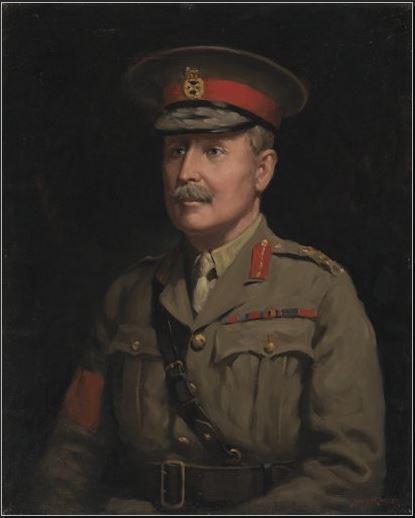Fifty Australians - William Holmes
The highest ranked Australian to die on the Western Front. Holmes was killed soon after his greatest success, his division’s victory at Messines, Belgium.
Major General William Holmes, CMG, DSO, VD (1862–1917)
By the age of 32 William Holmes was secretary of the NSW Metropolitan Board of Water Supply and Sewerage. Some of the main Sydney water supply dams were built while he was chief executive. At the same time he was imbued with the military culture and was an active and senior militia officer.
Holmes grew up at Victoria Barracks, Paddington, where his father was a soldier and later chief military clerk. As a boy he joined the 1st NSW Infantry Regiment as a bugler, and in 1886 was commissioned in the regiment, which he eventually rose to command. He served in the Boer War and was awarded the Distinguished Service Order.
In 1914 Holmes was given command of an expeditionary force sent to capture Rabaul and occupy the German territories. This done, he caused a mild controversy by ordering the flogging of four German colonists who had assaulted a missionary. He was next appointed to command the 5th Brigade AIF and took it to Gallipoli, and then to France. In January 1917 he was promoted major general and General Officer Commanding the 4th Australian Division.
Charles Bean admired Holmes’s “fine moral qualities, transparent sincerity, [and] energy”. As a brigade commander the general was “famed for his courage and enforced his standards by daily visiting its most dangerous sectors … during which his cheery face and the red staff cap-band which he insisted on wearing were not always welcome … but [the visits] helped keep his officers and men at a high pitch of performance.”
During 1917 Holmes commanded his division through the disaster of the battle of Bullecourt, and in the success of the battle of Messines two months later. Shortly afterwards, on 2 July, he was escorting the New South Wales Premier, William Holman, near the battlefield when a German shell burst alongside and fatally wounded him. His death, along with that of General William Bridges in 1915, meant that Australia had now lost two of its divisional commanders in action.

Norman Carter, Major General William Holmes 1920
William Holmes, a colonel, commanded the Australian Naval and Military Expeditionary Force in New Guinea in 1914.
Brigadier General Holmes at the time he was in command of the 5th Australian Brigade in France during 1916.
- Home
- Previous: Barney Hines
- Next: Albert Jacka

